
Ingredient
Dried prunes
Nature's Sweet and Tangy Gems
Dried prunes are plump, wrinkled fruits with a deep purple-brown color. They have a sticky and chewy texture, offering a delightful contrast to their sweet and tangy flavor. These gems of nature can be enjoyed as a healthy snack or used as a versatile ingredient in both sweet and savory dishes.
Origins and history
Prunes have a long and rich history that dates back thousands of years. They are believed to have originated in Western Asia and were highly valued by ancient civilizations for their taste, nutritional benefits, and medicinal properties. Prunes have been a staple in traditional cuisines around the world, from Mediterranean to Middle Eastern cultures.
Nutritional information
Dried prunes are a good source of dietary fiber, vitamins, and minerals. They are particularly rich in potassium, vitamin K, and antioxidants. Prunes also contain natural sugars and are relatively high in calories, so they should be consumed in moderation as part of a balanced diet.
Allergens
Dried prunes do not contain any known allergens, but individuals with sensitivities to stone fruits should exercise caution when consuming them.
How to select
When selecting dried prunes, look for ones that are plump, soft, and slightly sticky to the touch. Avoid prunes that are overly dry, hard, or have an off-putting odor. Organic or unsulfured options are recommended for those seeking a more natural product.
Storage recommendations
To maintain their freshness and prevent spoilage, store dried prunes in an airtight container in a cool, dry place. They can be kept at room temperature for several months, but for longer shelf life, refrigeration is recommended. Proper storage will help retain their flavor, texture, and nutritional value.
How to produce
Dried prunes can be produced by drying fresh plums either naturally in the sun or using specialized drying techniques. Amateur gardeners can grow plum trees in their backyard and dry the harvested fruits using a food dehydrator or by air-drying them in a well-ventilated area.
Preparation tips
Dried prunes can be enjoyed as a healthy snack on their own or used in a variety of culinary preparations. They can be added to baked goods like muffins or bread, incorporated into savory dishes like stews or tagines for a touch of sweetness, or used as a natural sweetener in sauces, jams, or chutneys. They can also be rehydrated and pureed to make a delicious prune paste for desserts or glazes.
Culinary uses
Dried prunes are commonly used in desserts such as cakes, tarts, or compotes. They are also a popular ingredient in savory dishes like Moroccan tagines, braised meats, or stuffing. Additionally, they can be used as a natural sweetener in smoothies, trail mixes, or energy bars.
Availability
Dried prunes are widely available in supermarkets, grocery stores, and specialty food stores worldwide. They are produced in many countries with a significant plum industry, including the United States, France, Chile, and China.
More ingredients from this category

Dried mangoes
The Sweet and Tangy Delight

Mixed dried fruits
Nature's Sweet Medley: Exploring the World of Mixed Dried Fruits

Fruit chips
Crispy Delights: Fruit Chips

Dried apples
The Sweet Essence of Sun-Dried Apples

Dried figs
Nature's Sweet Gems: Dried Figs
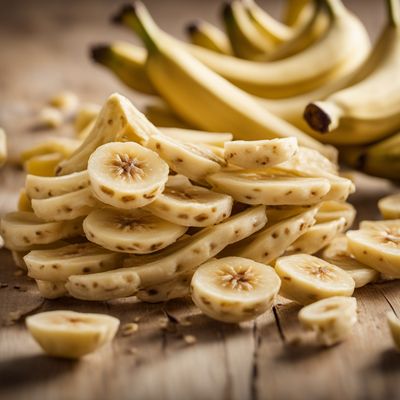
Dried bananas
Nature's Sweet and Chewy Delight: Dried Bananas

Dried pears
The Sweet Essence of Preserved Pears

Dried apricots
The Golden Gems: Unveiling the Delights of Dried Apricots

Dried vine fruits (raisins etc.)
Nature's Sweet Gems
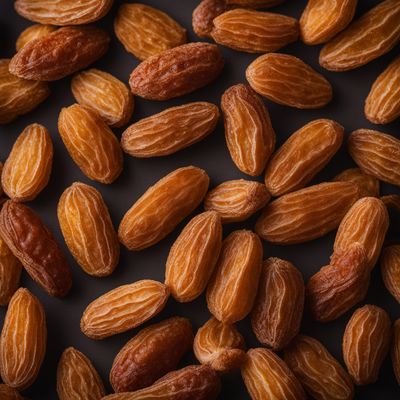
Dried dates
Nature's Sweet Gems

Chocolate coated dried fruit
Decadent Delights: Chocolate Coated Dried Fruit
Recipes using Dried prunes » Browse all
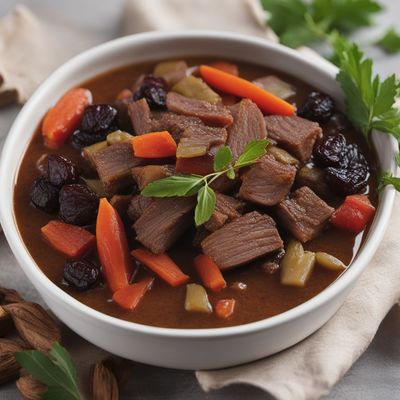
Cinghiale in Dolceforte
Savory and Sweet Wild Boar Stew

Mayizli Palov Recipe
Saffron-infused Rice Pilaf with Lamb and Dried Fruits
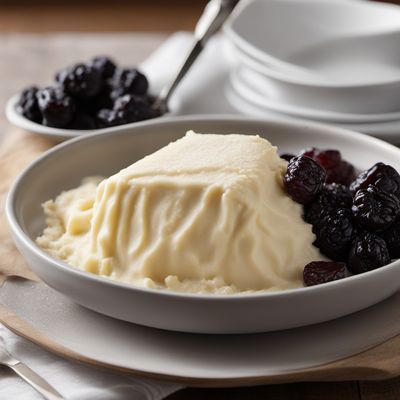
Far Breton with a Twist
Velvety Prune Far Breton: A French Delight with a Twist

Aromatic Rice Pilaf with Lamb and Dried Fruits
Sultan's Delight: A Flavorful Journey through Azerbaijani Cuisine

Authentic Mexican Mole Poblano
Spicy Chocolate Delight: Authentic Mexican Mole Poblano Recipe

Tropical Black Cake
Caribbean Delight: Tropical Black Cake

Aromatic Beef Pilaf with Dried Fruits
Sultan's Delight: A Flavorful Journey through Azerbaijani Cuisine

Hakka-style Black Fruit Cake
Indulge in the Richness: Hakka-style Black Fruit Cake

Marmite Sarthoise with a Middle Eastern Twist
Savory Middle Eastern Marmite Sarthoise: A Fusion of French and Arab Flavors

Catalan-style Braised Chicken with Almonds and Prunes
Savory Delights: Catalan Chicken Almondine

Danish-style Stuffed Poultry Delight
Savor the Danish Delight: A Festive Stuffed Poultry Extravaganza
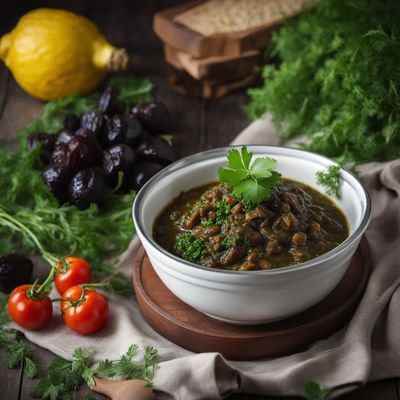
Pomeranian Ghormeh Sabzi
Savory Herb Stew with a Pomeranian Twist